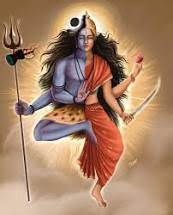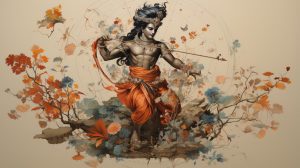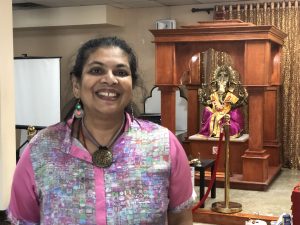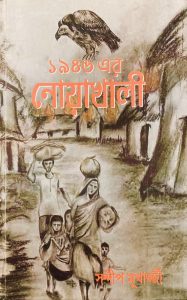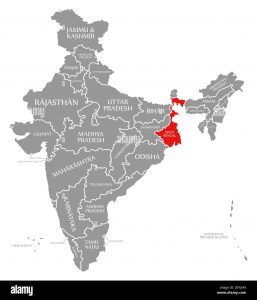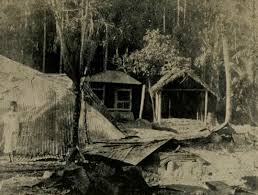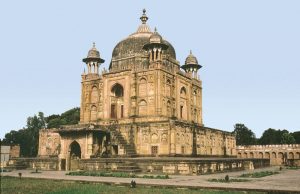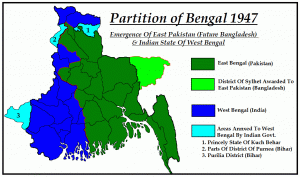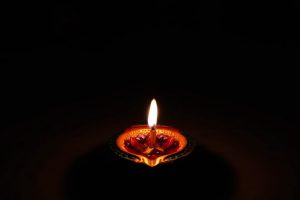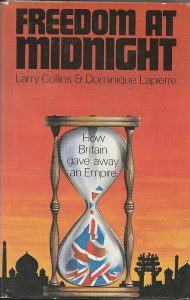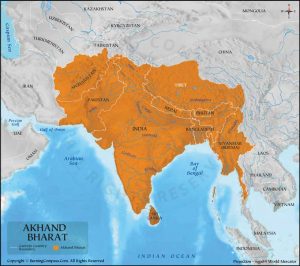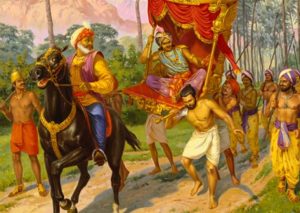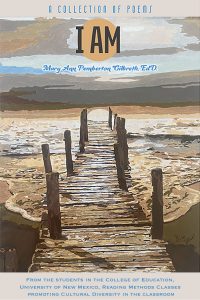Cultural Hegemony & Untold Genocides by Rinita Mazumdar PhD
Holi, the second largest festival of Hinduism
Of the many story surrounding Holi, the festivals of color, the second largest festival after Diwali, that is celebrated in all parts of India, of all different sects of Hinduism, the following is very interesting:
Holi is the festival of colors. It is said that Shiva, the greatest of Hindu Deities, after the loss of his consort Sati, sat in eternal meditation in a cave near Anantnag, a place in modern day Kashmir. Shiva is divided, bisexual, and every time he loses his other self, his own self he goes into his self, and this comes cyclically like the seasons. Now Sati was reborn as Parvati, the other incarnation of the Goddess Durga, is trying to reach him. He refuses to wake up from his meditative slumber. World will be destroyed if the two selves, the masculine and feminine identity do not come together.
As the snow melts in the cave in Kashmir, and as Spring approaches, Kamadev (“kama” as desire) approaches and shoots his flower bow (somewhat like Cupid’s bow) towards Shiva to wake him up, Shiva is slowly waking up and enraged! His third eye opens and he burns Kamdev to ashes, which is why is called “Anangadev” (“Anangadev” one with no bodies). Then comes the consort of Kamdev Ratidevi and curses and cries for her Divine consort. Slowly, Shiva wakes up and eventually, ice is melting, flowers are blooming, and small insects are after a long slumber are going from one flower to another to get honey. Nature is waking up, Parvati’s is eros, and Shiva the eternal consciousness is waking up, and the earth is rejuvenating.
In traditional psychoanalysis, started by Freud, the libido of pleasure is what drives the different identities at different stages of human development. In the oral and anal stage, the libido is concentrated in the mouth and anus, there is diffused gender identity. In each of these stages, the Self and the other are diffused and the desire is towards the Phallic mother (the depiction of the female Deities). As the boy gets the message that if he desires his Phallic mother, he will be castrated by Father, he gives up his initial desire and the Phallic mother in the consciousness, he consolidates his masculine identity and becomes “male”, but the trace of his original remains. He knows with the phallus he has he can acquire or possess a mother-substitute in the future. In female, in traditional psychoanalysis, who realizes that she is already castrated, desires the phallus. She goes to father who doesn’t give her the phallus, to mother who doesn’t give her the phallus either and ultimately settles for the child from father or father substitute, the desire for the phallus goes into the unconscious. So, each identity has the “other”, and hence their desire will never be satisfied, so there will always be a desire for the other, for no identity is perfect, each identity has a lost part of the other (Sati) in the Self (Shiva). According to psychoanalyst Helen Deutsch, what drives the feminine Subjectivity is masochism, where the desire for phallus is obtained in coitus, lost when coitus is complete, gets back in pregnancy, loses it in childbirth, gets in lactation, loses in weaning, and hence the cycle goes on. Nature too goes through cycles of snow and depression and then Spring with blossoms. Depression, maniac, and cycle.
For Jean Riviera the feminine identity is not a lack of the phallus or a substitute, but a performance of the lack to please father, who would punish a woman for having stolen his phallus. So, femininity is the performance of the lack, as Parvati performs the “other” to get Shiva and the entire cycle of the earth rejuvenated. In Lacan, no embodiment has the phallus, the female performs the lack and gives the “has phallus” role to the male, the embodied Shiva, the Shiva who wakes up, not the ultimate consciousness or enlightened Self. one who has attained Nirvana and out of the cycle of birth and death, or Samsara. One has to go through the world of desires and multiplicity in order to reach the non dual reality.
In Kubler Ross’s theory of grief one goes through denial, anger, depression, healing, and acceptance, so does nature. In cycles of Spring one goes through seasonal depression, and yet through our story telling and love, we can heal as a community….
Shiva’s Dance in Albuquerque
Rinita Mazumdar, Ph.D. is one of the leading feminist scholars in the Southwest. Originally from India, Dr. Mazumdar earned her Masters from India and Canada in Philosophy and MSc in Psychology from the University of Phoenix. She received her Ph.D. in Philosophy from the University of Massachusetts in Amherst. Find her poetry collection, “Shiva’s Dance in Albuquerque” by clicking here.
Forthcoming Work
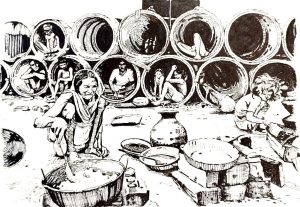
Noakhali, 1946: By Sandip Mukherjee, Translated and recreated by Rinita Mazumdar PhD. Subscribe below for access to pre-sale discounts and signed copies!

